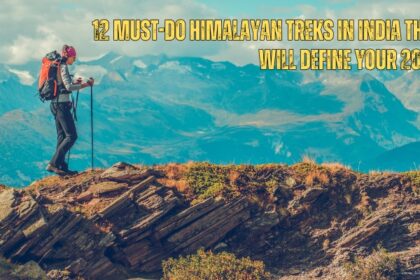India, a land of diverse landscapes, cultures, and traditions, offers an endless range of experiences for travelers. From the snow-capped peaks of the Himalayas to the sun-kissed beaches of Goa, the country’s geographical diversity means that the weather conditions can vary greatly across regions. Deciding on the best time to visit India can be a perplexing task for any traveler, especially when faced with a range of seasons and climatic variations. Understanding the weather patterns and their impact on your travel plans is key to ensuring you make the most of your visit.
India’s vastness can be both a blessing and a challenge, offering distinct climates that cater to different preferences and activities. Whether you’re a history buff keen to explore ancient forts and temples, a nature lover looking to trek through the Himalayas, or simply someone who wishes to bask in the warmth of a tropical paradise, knowing the best time to visit India for your specific interests will help you plan a memorable trip.
Seasonal Overview: India’s Climate Patterns
India experiences three primary seasons: summer, monsoon, and winter. Each season has its own advantages and disadvantages when it comes to travel. To understand when is the best time to visit India, it’s essential to look at how each season affects different regions.
Summer (March to June)
Summer in India can be quite intense, especially in the northern and central parts of the country. Temperatures in cities like New Delhi, Agra, and Jaipur can soar above 40°C (104°F), making outdoor exploration uncomfortable for many tourists. However, this is also a great time to visit the hill stations in the northern regions, such as Shimla, Manali, or Dharamshala, where the temperatures are more pleasant and the landscapes offer a refreshing escape from the heat.
If you’re planning a visit to the beaches of Goa or Kerala, the summer months can be a great time as well. The coastal regions remain warm but manageable, with cooling sea breezes offering a relief from the heat. For travelers who prefer to avoid the crowds of peak tourist season, the early summer months (March to April) can offer quieter experiences, though they may come with higher temperatures.
Monsoon (June to September)
Monsoon season in India brings much-needed rainfall to the country, especially in the western and southern regions. While the lush greenery and rejuvenated landscapes can be a sight to behold, this is not always the best time to visit India for many types of travel. Heavy rains and strong winds often disrupt travel plans, making some areas inaccessible, especially in regions like Kerala and the Western Ghats. The monsoon can also lead to flight cancellations, delays, and muddy conditions that can hinder sightseeing.
However, there are exceptions. The northeastern states of India, such as Sikkim and Darjeeling, tend to receive less rainfall than other regions and can still be quite pleasant during the monsoon months. For adventure seekers, the monsoon also offers an opportunity to experience rafting, trekking, and other outdoor activities in a completely different light. For example, Ladakh, known for its stunning landscapes, remains largely dry during the monsoon, making it one of the best times to visit India for those seeking a remote, off-the-beaten-path experience.
Winter (October to February)
Winter is widely regarded as the best time to visit India, especially for those looking to explore a variety of destinations without being hindered by extreme temperatures or rain. From October to February, most of the country experiences cooler, more pleasant temperatures, making it ideal for sightseeing and outdoor activities.
In the northern regions, such as Rajasthan, Delhi, and Agra, daytime temperatures can range from 10°C to 25°C (50°F to 77°F), while the nights may be colder, especially in the desert areas. This is the perfect time to explore historical sites like the Taj Mahal, Jaipur’s palaces, or the forts of Rajasthan, without the discomfort of scorching heat.
Southern India, including destinations like Kerala, Tamil Nadu, and Karnataka, also enjoys cooler weather during the winter months. The pleasant temperatures make it an excellent time for beach holidays, backwater cruises, and exploring the cultural richness of places like Madurai or Cochin. The beaches of Goa are particularly attractive during the winter, offering warm but comfortable weather for relaxation.
For those who want to experience the Himalayas, winter offers an opportunity for snow trekking, skiing, and other winter sports in regions like Himachal Pradesh, Uttarakhand, and Jammu & Kashmir. The snowfall transforms the landscape into a winter wonderland, making it one of the most enchanting times to visit India’s mountainous terrain.
Regional Variations and Local Considerations
While winter is the best time to visit India for many tourists, it’s important to remember that India’s regional climates vary significantly. The northern plains can experience harsh winters, while southern India remains relatively mild year-round. In the Thar Desert of Rajasthan, for example, temperatures can plummet during the night, while the daytime remains warm.
The Andaman Islands and Lakshadweep are warm and tropical throughout the year, with the best time to visit being between November and March. For those interested in exploring the less-traveled areas of India, the winter months are also ideal for discovering places like Rajasthan’s desert, Ladakh’s barren yet beautiful landscapes, and the coastal areas of Odisha or Tamil Nadu.
Conclusion
When it comes to choosing the best time to visit India, it truly depends on the type of experience you’re seeking. For those looking for a comfortable climate for sightseeing, the winter months (October to February) are undoubtedly the most favorable, offering a balance of pleasant temperatures and clear skies. Summer and monsoon months can be challenging for travel in certain regions but can also offer unique opportunities for adventure and off-the-beaten-path exploration.
To ensure a fulfilling and enjoyable trip, it’s crucial to plan your visit according to the weather conditions of the regions you wish to explore. Whether you’re drawn to the serenity of the hills, the vibrancy of the cities, or the tranquility of the beaches, India has something to offer year-round—making it important to choose the best time to visit India based on your interests, preferences, and weather tolerance.





